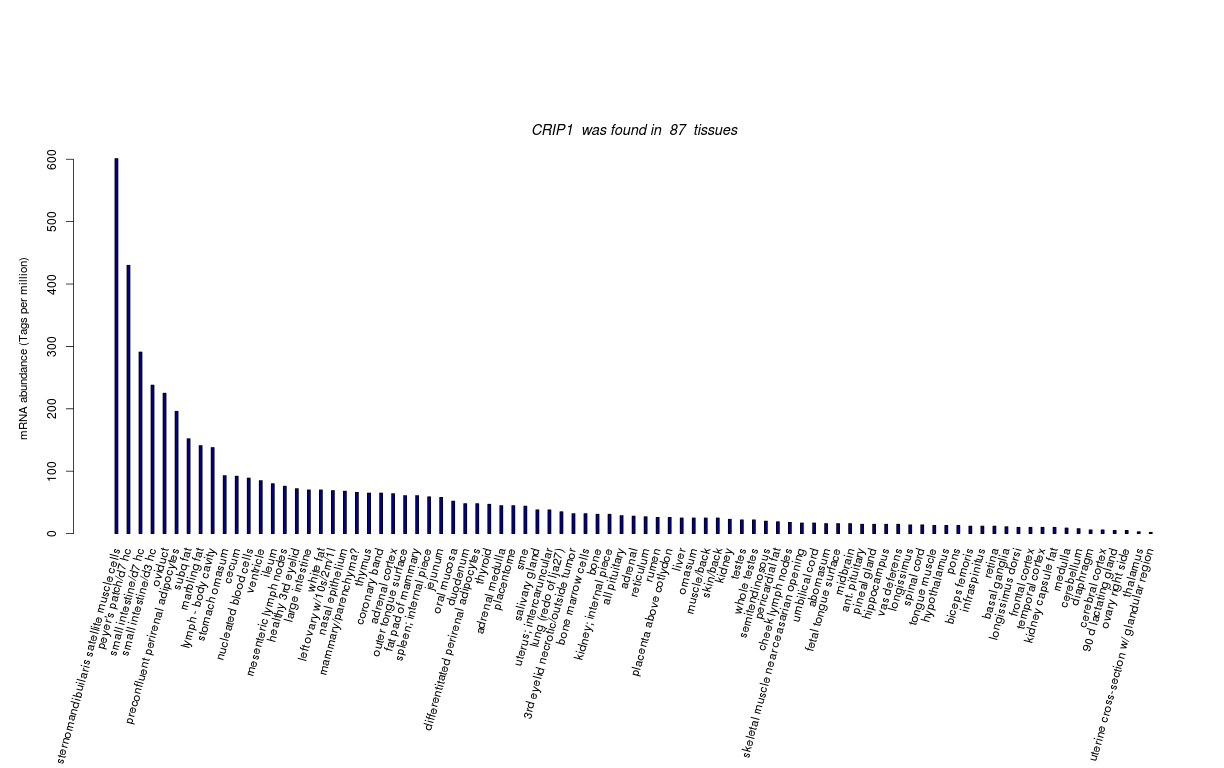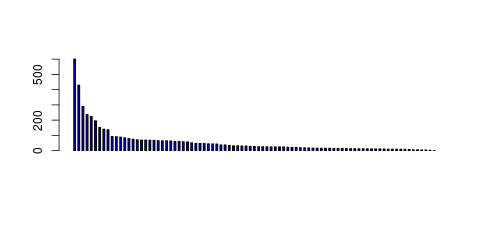| Bos taurus Gene: CRIP1 | |||||||||||||
|---|---|---|---|---|---|---|---|---|---|---|---|---|---|
| Summary | |||||||||||||
| InnateDB Gene | IDBG-636174.3 | ||||||||||||
| Last Modified | 2014-10-13 [Report errors or provide feedback] | ||||||||||||
| Gene Symbol | CRIP1 | ||||||||||||
| Gene Name | Cysteine-rich protein 1 | ||||||||||||
| Synonyms | |||||||||||||
| Species | Bos taurus | ||||||||||||
| Ensembl Gene | ENSBTAG00000047229 | ||||||||||||
| Encoded Proteins |
Cysteine-rich protein 1
|
||||||||||||
| Protein Structure |

|
||||||||||||
| Useful resources | Stemformatics EHFPI ImmGen | ||||||||||||
| Entrez Gene | |||||||||||||
| Summary |
This gene does not have any Entrez summary - the following is the summary from its human ortholog ENSG00000257341:
Cysteine-rich intestinal protein (CRIP) belongs to the LIM/double zinc finger protein family, members of which include cysteine- and glycine-rich protein-1 (CSRP1; MIM 123876), rhombotin-1 (RBTN1; MIM 186921), rhombotin-2 (RBTN2; MIM 180385), and rhombotin-3 (RBTN3; MIM 180386). CRIP may be involved in intestinal zinc transport (Hempe and Cousins, 1991 [PubMed 1946385]).[supplied by OMIM, Mar 2008] |
||||||||||||
| Gene Information | |||||||||||||
| Type | Protein coding | ||||||||||||
| Genomic Location | Chromosome 21:71390600-71392110 | ||||||||||||
| Strand | Reverse strand | ||||||||||||
| Band | |||||||||||||
| Transcripts |
|
||||||||||||
| Interactions | |||||||||||||
| Number of Interactions |
This gene and/or its encoded proteins are associated with 0 experimentally validated interaction(s) in this database.
|
||||||||||||
| Gene Ontology | |||||||||||||
Molecular Function |
|
||||||||||||
| Biological Process |
|
||||||||||||
| Cellular Component |
|
||||||||||||
| Orthologs | |||||||||||||
|
Species
Mus musculus
Homo sapiens
|
Gene ID
Gene Order
|
||||||||||||
| Cross-References | |||||||||||||
| SwissProt | Q56K04 | ||||||||||||
| TrEMBL | |||||||||||||
| UniProt Splice Variant | |||||||||||||
| Entrez Gene | 574093 | ||||||||||||
| UniGene | |||||||||||||
| RefSeq | NM_001025349 | ||||||||||||
| HUGO | |||||||||||||
| OMIM | |||||||||||||
| CCDS | |||||||||||||
| HPRD | |||||||||||||
| IMGT | |||||||||||||
| EMBL | AY911323 BC102754 | ||||||||||||
| GenPept | AAI02755 AAW82091 | ||||||||||||
| RNA Seq Atlas | 574093 | ||||||||||||
| Transcript Frequencies | |||||||||||||
| Tag Count based mRNA-Abundances across 87 different Tissues (TPM).
Based on Data from Bovine Gene Atlas |
(Move your mouse over the image to view a more detailed version) |
||||||||||||


